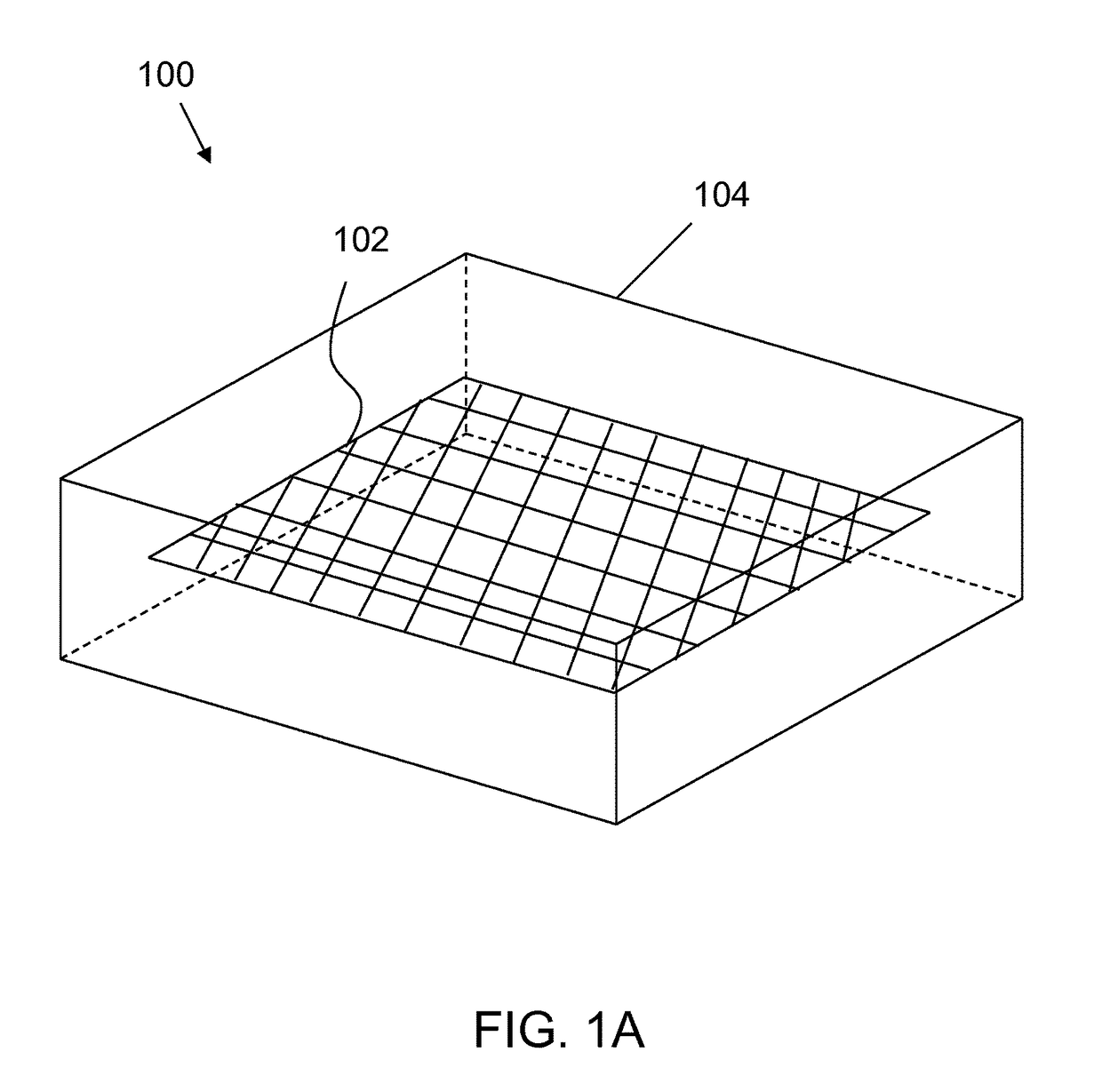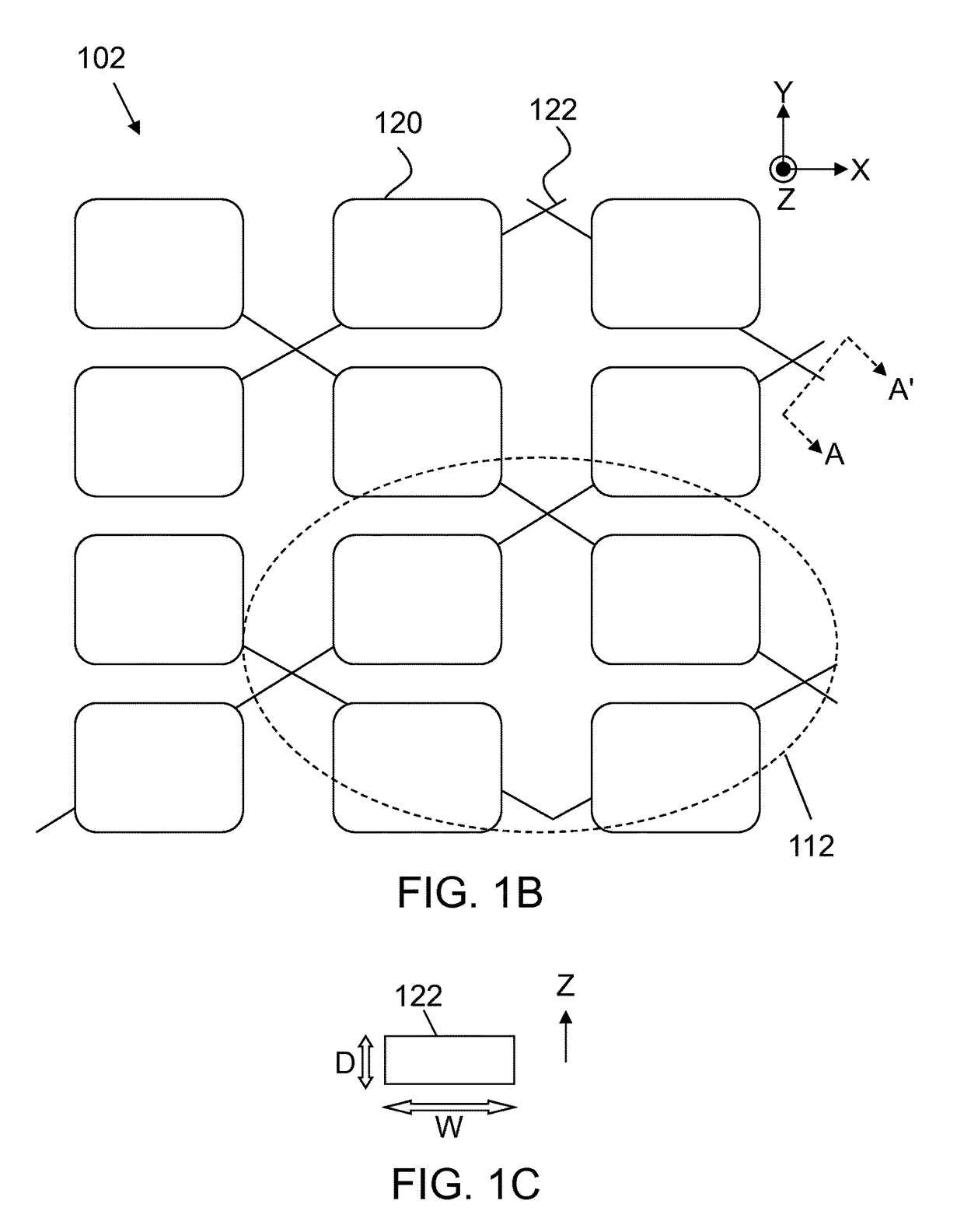Microstructured reconfigurable composite material
a composite material and microstructure technology, applied in the field of composite materials, can solve the problems of affecting the efficiency of airframe design, and limiting the degree of optimization that can be achieved, so as to achieve highly segregated in-plane and out-of-plane stiffness properties, and high control of deformation and stiffness properties
- Summary
- Abstract
- Description
- Claims
- Application Information
AI Technical Summary
Benefits of technology
Problems solved by technology
Method used
Image
Examples
Embodiment Construction
[0043]Detailed descriptions will be made below in reference to certain exemplary embodiments according to the present invention. The drawings and descriptions are to be regarded as illustrative in nature and not restrictive.
[0044]Embodiments of the present invention provide reconfigurable (or morphing) composite materials that provide highly controlled deformation and stiffness properties. The construction and operation of these materials with machine like properties macroscopically are enabled by utilizing machine like microstructures included in the material. Microscopic three dimensional (3D) structures are included in the materials to control their deformation and stiffness properties. Exemplary microscopic 3D features that may be included into the composite materials include bearing, ball and pin joints, and detents. The reconfigurable composite materials according to the embodiments of the present invention allow a range of new material properties to be enabled. These include ...
PUM
| Property | Measurement | Unit |
|---|---|---|
| aspect ratio | aaaaa | aaaaa |
| aspect ratio | aaaaa | aaaaa |
| aspect ratio | aaaaa | aaaaa |
Abstract
Description
Claims
Application Information
 Login to View More
Login to View More - R&D
- Intellectual Property
- Life Sciences
- Materials
- Tech Scout
- Unparalleled Data Quality
- Higher Quality Content
- 60% Fewer Hallucinations
Browse by: Latest US Patents, China's latest patents, Technical Efficacy Thesaurus, Application Domain, Technology Topic, Popular Technical Reports.
© 2025 PatSnap. All rights reserved.Legal|Privacy policy|Modern Slavery Act Transparency Statement|Sitemap|About US| Contact US: help@patsnap.com



